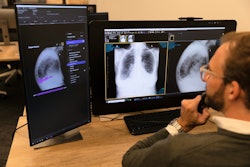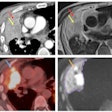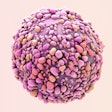Dear AuntMinnie Member,
To paraphrase the old television ad, when online search giant Google talks, people listen. So it's no surprise that our article on the company's launch of a new medical imaging software platform was the top story for the week.
Google on October 4 unveiled Medical Imaging Suite, a platform that's designed to facilitate interoperability between medical imaging facilities while also fostering the development of artificial intelligence algorithms. The platform includes five key components, ranging from data exchange to cloud deployment.
The news is particularly interesting because the last time Google was making news in the healthcare space, it was for shutting down its Google Health operation as a separate business and folding its activities back into the parent company. Google clearly still sees medical imaging as a promising market niche.
Is your imaging facility thinking about replacing its PACS or enterprise imaging system? If so, you might want to give your current vendor a look instead of finding a new dance partner, according to the PACSman, Michael J. Cannavo. He explained why in a new column in our Enterprise Imaging Community.
TVUS to check IUDs
Transvaginal ultrasound (TVUS) is commonly used to check the positioning of intrauterine devices (IUDs) after insertion. But is this practice really necessary for devices placed without any complications?
Researchers from the Netherlands performed a study that found that ultrasound follow-up at the six-week mark wasn't really necessary for most IUD insertions. Find out why in a story in our Ultrasound Community.
Also, learn about how a Canadian breast center was able to streamline its operations even more during the COVID-19 pandemic by providing services like ultrasound-guided biopsy more quickly after a suspicious lesion was detected.
Following up findings
Finally, how to follow up on abnormal findings found on screening exams is a problem that challenges clinicians across multiple medical specialties. A new study in our Women's Imaging Community explained how this issue vexes primary care physicians as well.
While you're in the community, read about how women who might benefit from CT lung cancer screening could be identified during their breast screening exams and how digital breast tomosynthesis along with synthesized mammography could be a better tool for detecting cancer in women with dense breast tissue than conventional mammography alone.
Get these stories and more in our Women's Imaging Community.



















